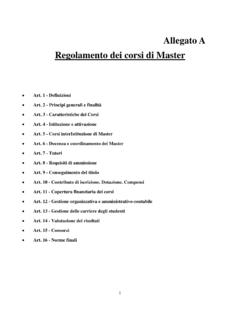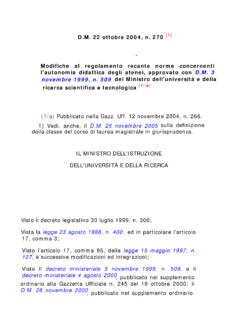Transcription of Get Smart About Reset: Think Local, Not Global
1 WP272 ( ) March 7, 1 2008 Xilinx, Inc. All rights reserved. XILINX, the Xilinx logo, and other designated brands included herein are trademarks of Xilinx, Inc. All other trademarks are the property of their respective owners. One of the commandments of digital design states,"Thou shalt have a master reset for all flip-flops sothat the test engineer will love you, and yoursimulations will not remain undefined for timeeternal." So, some may be surprised to learn that applying aglobal reset to your FPGA designs is not a very goodidea and should be avoided. Clearly, this is acontroversial issue, so let's take a look at the reasonswhy such a design policy should be Paper: Xilinx FPGAsWP272 ( ) March 7, 2008 Get Smart About Reset: Think Local, Not GlobalBy: Ken ChapmanR2 ( ) March 7, 2008 Global Reset Isn't Timing-CriticalRGlobal Reset Isn't Timing-CriticalWhat are the typical drivers of a Global reset signal?
2 Press switch: Definitely slow and very undefined timing. Power supply status output: Active for a long period until supply stable. Microprocessor: Pulse tends to be long. In all these cases, it would appear that the reset signal is slow; hence, it would also appear safe to assume that it is not timing-critical. When specifying a timing constraint for your FPGA design, this signal would normally be assigned a long period (low frequency).However, the assumption that the Global reset is not timing-critical is not strictly true, and this assumption statistically becomes a bigger issue as clock rates increase. Although the duration of the reset pulse may be long relative to the clock period and guarantee that all the device flip-flops are reset, the release of the reset signal should be considered to be a timing-critical event. The release of the Global Set/Reset (GSR) within the device is also a Global reset, and just because it is part of the silicon device, it is not infallible.
3 This is also a high fan-out network within the device. While the start-up sequence can be synchronized to a user clock, it cannot be synchronized to all clocks in one design. Devices have multiple DLL/DCM/PLL modules, and each is capable of generating multiple clocks and clock Figure 1, a reset signal is de-asserted at some time between clock edges. The signal then propagates to the various flip-flops. At each flip-flop, the signal should be de-asserted a set-up period before the active clock edge. It is obvious that as the clock rate goes up, the time available to distribute the reset signal goes down. Considering the reset signal is a very high fan-out network, meeting the de-assertion timing requirements is a huge Target - Figure 1 Figure 1:Reset Timing Diagram - Asserted Between Clock EdgesClockReset at Device PinReset atFlip-FlopsClock Period (5 ns at 200 MHz)Max Time AvailableSetup Time( ns)Network Skew?WP272_01_010708 Does It Really Matter?
4 WP272 ( ) March 7, 3 RIf the reset is released asynchronously to the clock (often the case), there is no way to guarantee that all flip-flops will be released on the same clock edge, even if the distribution time is less than a clock period (Figure 2).Flip-flops receiving the release of reset at A will be active on the first clock edge, but flip-flops receiving the release of reset at C will not become active until the following clock edge. The flip-flops at B are difficult to define and may even lead to increasing clock rates and the potential distribution skew associated with large devices, it becomes almost inevitable that not all flip-flops are released in preparation for the same clock edge (Figure 3).Does It Really Matter?The good news is that of the time, the timing of the reset release really doesn't matter. With statistics like that, it isn't surprising that most circuits work. However, if you have ever had one of the circuits that doesn t work the first time, then maybe you have encountered one of the cases and have been unlucky enough to have released the reset at the wrong time.
5 X-Ref Target - Figure 2 Figure 2:Reset Timing Diagram - Asserted Asynchronously to the ClockX-Ref Target - Figure 3 Figure 3:Reset Timing Diagram - High Clock RateClockReset at Device PinReset atFlip-FlopsSetup Time?WP272_02_010708 ABC{ClockReset at Device PinReset atFlip-FlopsWP272_03_0107084 ( ) March 7, 2008 Does It Really Matter?RThe timing of the reset release doesn t matter in the scenario shown in Figure there is a data flow through a pipelined process, it really doesn't matter when the master reset is released. After a few cycles, the entire pipeline will be operational, and any incorrect data will be flushed out of the system. In fact, there is little point in having a reset at all. Even a simulation will emulate the initial state following configuration, or unknown states will be purged out of the system as valid data inputs are applied. However, Figure 5 shows a scenario in which the timing of the reset release does this example of a simple one-hot state machine, there is a clear potential for failure.}
6 If the first flip-flop containing the hot state is released one clock cycle before the second flip-flop, then the hot state will be lost and the state machine will become cold forever. The probability of this happening tends to be reduced by the close proximity of the flip-flops involved (low skew on localized reset network). However unless the set-up time is guaranteed, it could still happen. It is also possible that an encoded state machine may transition into an unexpected state, including an illegal state, if all flip-flops are not released on the same clock cycle. Ultimately, it is the circuits that contain feedback paths that require careful reset considerations. Circuits without feedback really do not need a reset at all. In digital signal processing applications, a finite impulse response filter (FIR) has no feedback. Output samples really have no value until valid data has filled all the taps, so resetting the tap registers achieves nothing.
7 However, an infinite impulse response filter (IIR) contains feedback. If a spurious output sample is generated as a result of an unclean release of reset, then the output samples will be affected for a significant period of time. In the worst case, complete failure of the filter may occur due to Target - Figure 4 Figure 4:Reset for a PipelineX-Ref Target - Figure 5 Figure 5:Reset for a One-Hot State MachineFunctionFunctionFunctionDinResetD outWP272_04_010708 ResetWP272_05_010708 State_1 State_2 State_3 State_4 1 0 0 0 Automatic Coverage of the of CasesWP272 ( ) March 7, 5 RAutomatic Coverage of the of CasesWhen a Xilinx FPGA is configured or reconfigured, every cell is initialized (Figure 6). This is the ultimate in master reset because it covers far more than simple flip-flops. Configuration has the same effect as a Global reset, but it also initializes all RAM cells. With the increase in embedded RAM available on devices, this is a very useful feature.
8 To know that all RAM contents are pre-defined is ideal for simulation and operation and eliminates the requirement to have boot-up sequences to clear memory. As processors also become embedded in Xilinx devices (either hard or soft), all program and data areas are defined even before the processor executes the first instruction. With this natural benefit of Xilinx devices, it doesn't make sense to burn up valuable programmable resources to reset only the flip-flops. The simulator should be able to model this initialization (often called a power-on reset), which again avoids any requirement for the reset signal in your for the of CasesThe most important thing is that there is a strategy for handling resets in your designs, and that these strategies are covered at design reviews. Establish the critical parts of the design that have to be released synchronously with an associated clock domain. A localized high-performance reset network can then be inserted to control only those flip-flops that require a localized circuit in Figure 7 shows a potentially useful mechanism to control a localized reset network.
9 The circuit has the advantage of providing the same effect following device configuration as it does when an external signal is applied. During configuration of the device or an asynchronous reset signal, all flip-flops in the chain are preset to 1. Almost immediately, the last flip-flop of the chain then drives an active reset to the localized reset network. Following release of GSR or the X-Ref Target - Figure 6 Figure 6:FPGA ConfigurationRESETFPGARAM 0 FDC 1 FDPWP272_06_010708 Configuration001011101101001011100011010 0110100110101X-Ref Target - Figure 7 Figure 7:Localized ResetWP272_07_010708DD DDFDPFDPFDPFDPDDFDR FDRA synchronous_ResetSynchronousLocalizedRes et_signal(Low Fan-Out)Clock6 ( ) March 7, 2008 Reset Costs More Than You Think !Rasynchronous reset signal, the shift register chain begins to fill with 0s each clock number of flip-flops in the chain determines the minimum duration of the reset pulse issued to the localized network.
10 Eventually, the last flip-flop makes the transition from High to Low, and the localized reset is released synchronously with the clock. Flip-flops being reset can employ a synchronous set (FDS) or synchronous reset (FDR) leading to a fully synchronous design and easy timing specifications and Costs More Than You Think !While implementing a design, the costs of a Global reset in HDL code can be overlooked. However, the cost can be significant: Routing resources of the device are used. Reduces freedom for other connections. May lower system performance potentially requiring a higher device speed grade. Increased routing time. Logic resources of the device are used. Use of dedicated reset on flip-flops. Operational resets result in additional gate before D input or dedicated reset input. Almost certainly will impact size of design. Additional logic level almost certainly will impact system performance. Increased place and route time.



















